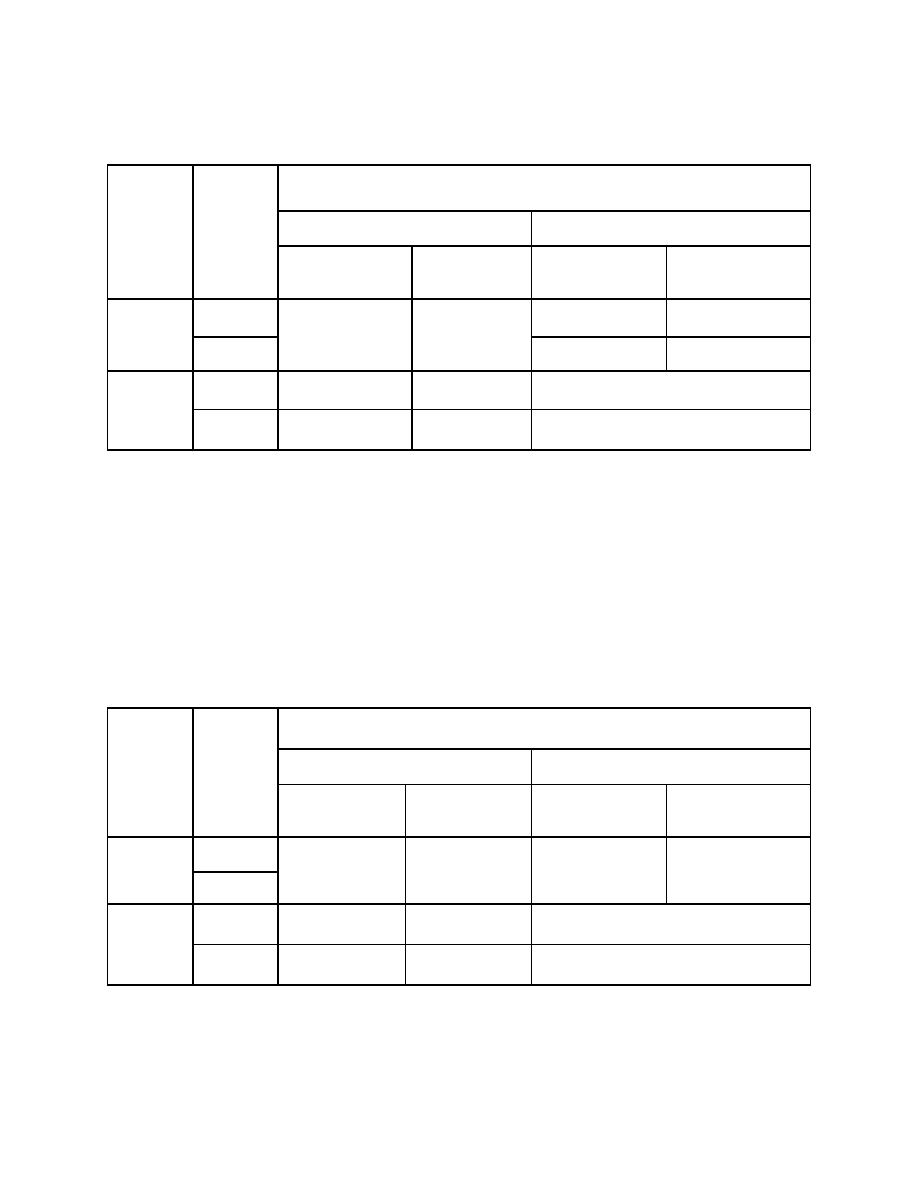
UFC 4-010-01
8 October 2003
Including change 1, 22 January 2007
Table B-2. Laminated Glass Thickness Selection for Single Pane Windows
Applicable
Applicable
Nominal Laminated Glass and PVB Interlayer Thickness
Level of
Explosive
Requirements (1)
Protection
Weight
At Conventional Construction
Between Conventional Construction
(2)
and Minimum Standoff Distances (2)
Standoff Distance
Minimum
Minimum
Nominal
Interlayer
Nominal
Interlayer
Glass Thickness
Thickness
Glass Thickness
Thickness
1.50 mm (0.060")
F2248/E1300
I
(3)(4)
3 mm (1/8")
6 mm
0.75 mm
Low
(1/4")
(0.030")
F2248/E1300 (3)
1.50 mm (0.060")
II
F224845/E1300 (5)
1.50 mm (7)
Refer to DoD Security Engineering
I
(0.060")
Facilities Design Manual
Very Low
F224810/E1300 (6)
1.50 mm (7)
Not Applicable (8)
II
(0.060")
(1) Nominal thickness will be achieved by laminating two thinner glass panes of the same thickness to achieve the nominal
thickness.
(2) Refer to Table B-1 for applicable standoff distances.
(3) Enter ASTM F 2248 with the applicable explosive weight and the actual standoff distance achieved to determine the
equivalent 3-second duration design loading.
(4) Calculate the required laminated glass thickness for this pane by subtracting 3mm (1/8") from the thickness determined by
ASTM E 1300.
(5) For this window, enter ASTM F 2248 with explosive weight I at a standoff distance of 45m (148') to determine the equivalent
3-second duration design loading. The laminated glass thickness selected for this design loading may then be used at the 25m
(82') conventional construction standoff distance.
(6) For this window, enter ASTM F 2248 with explosive weight II at the 10m (33') conventional construction standoff distance to
determine the equivalent 3-second duration design loading.
(7) For standoff distances greater than the conventional construction standoff distance, lesser interlayer thicknesses may be
allowable based on analysis, but they shall not be less than 0.75 mm (0.030")
(8) Conventional construction standoff distance = minimum standoff distance.
Table B-3. Laminated Glass Thickness Selection for Insulating Glass Unit (IGU) Windows
Applicable Applicable
Level of
Explosive
Nominal Laminated Glass Thickness w/ PVB Interlayer Requirements (1)
Protection
Weight
At Conventional Construction
Between Conventional Construction
Standoff Distance (2)
and Minimum Standoff Distances (2)
Minimum
Interlayer
Glass Thickness
Glass Thickness
Interlayer
(3)
Thickness (4)
(3)
Thickness (4)
I
6mm
0.75mm
6mm
1.50mm
Low
(1/4")
(0.030")
(1/4")
(0.060")
II
F224845/E130 (5)
Refer to DoD Security Engineering
0.75mm
I
Facilities Design Manual
(0.030")
Very Low
Not Applicable (6)
6mm
0.75mm
II
(1/4")
(0.030")
(1) Nominal thickness will be achieved by laminating two thinner glass panes of the same thickness to achieve the nominal
thickness.
(2) Refer to Table B-1 for applicable standoff distances.
(3) Glass thickness is the same for interior and exterior panes.
(4) Interlayer is within the inboard pane only as a minimum.
(5) For this window, enter ASTM F 2248 with explosive weight I at a standoff distance of 45m (148') to determine the equivalent
3-second duration design loading. The glass thickness selected for both panes of the IGU for this design loading may then be
B-13


 Previous Page
Previous Page
